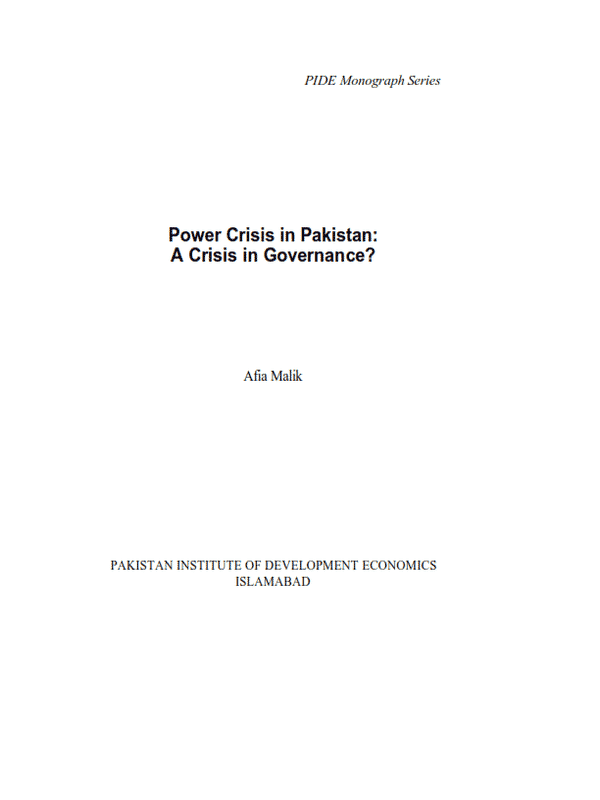
Pakistan Institute of Development Economics
- Home
Our Portals
MenuMenuMenuMenuMenuMenuMenu - ResearchMenuMenuMenuMenuMenuMenuMenu
- Discourse
- The PDR
- Our Researchers
- Academics
- Degree Verification
- Thesis Portal
- Our Portals
Power Crisis In Pakistan: A Crisis In Governance?
“Yesterday Is Not Ours To Recover, But Tomorrow Is Ours To Win Or To Lose”. (Lyndon B. Johnson) Pakistan Went Through An Extraordinary Period Of Having Surplus Electricity From The Late 1990s To 2004-05. But Since Then, The Country Has Been Facing An Acute Shortage Of Electricity. The Present Crisis Started In 2006-07 With A Gradual Widening In The Demand And Supply Gap Of Electricity. Since Then This Gap Has Grown And Has Assumed Proportions Which Are Considered To Be The Worst Of All Such Power Crises That Pakistan Has Faced Since Its Inception. The Electric Power Deficit Had Crossed The Level Of 5000 Mw At Many Points During The Year 2011. At One Stage In The Month Of May, 2011 This Shortfall Had Surpassed 7000 Mw. This Widening Demand Supply Gap Has Resulted In Regular Load Shedding Of Eight To Ten Hours In Urban Areas And Eighteen To Twenty Hours In Rural Areas [Fodp (2010)]. Rapid Growth In Demand, High System Losses, And Inadequate Generation Capacity Are Among The Major Reasons For This Huge Gap. Seasonal Reduction In The Availability Of Hydropower, Reduction In The Indigenous Gas Resources And Too Much Reliance On Imported Fuel Oil For Power Generation Are Primarily Responsible For The Current Crisis. The Unavailability Of This Fuel Oil Given The Mounting Circular Debt Problem (A Major Cause Of Fluctuating Available Power Generation Capacity) Has Further Accentuated The Energy Crisis .



